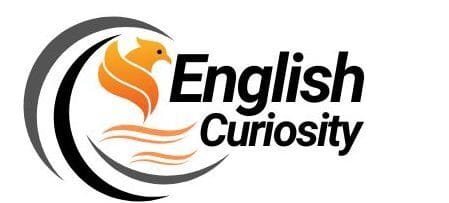2025 NTA UGC Net History Online Mock Test 32 held in India: 25 multiple-question answers from the history topic of the UGC NET Exam are given below.
New NTA UGC Net History Online Mock Test 32
| Mock Test Set | 32 |
| Question Type | MCQ |
| Medium | Online |
| Subject | History |
| Exam | UGC Net |
| Question | 25 |
| Marks | 1 |
1. Unfortunately, the original document of Megasthenes, Indika has not survived and what remains are only quotations from it in various classical texts. Which of the following was not one of the later Greek writers to quote from Megasthenes?
- (a) Pliny
- (b) Strabo
- (c) Diodorus
- (d) Arrian
2. Which of the following was not one of the Saiva sects?
- (a) Lakula
- (b) Pasupata
- (c) Maheswara
- (d) Shaktism
3. Which of the following does not prove that Siva was a non-Vedic or non-Aryan deity?
- (a) Siva as a deity was unknown to Vedic Aryans
- (b) Worship of linga, the chief emblem of Saivism was condemned in the Rigveda
- (c) The worship of linga was prevalent in the Harappan period
- (d) The characteristics of Siva are of a folk deity
4. Shaktism centred around the worship of:
- (a) Durga in one of her nine forms
- (b) Harappan Mother Goddess
- (c) The Vedic Parvati
- (d) The Virgin Goddess, enshrined at Kanyakumari
5. The non-Aryan god Siva was identified with the Vedic god:
- (a) Indra
- (b) Maruta
- (c) Rudra
- (d) Prajapati
6. The earliest exposition of Saiva system was established by:
- (a) Basava
- (b) Lakula
- (c) Bijjala
- (d) Sankaracharya
7. Saivism spread to various Hindu states of South-East Asia, from:
- (a) Kashmir
- (b) Punjab
- (c) North India
- (d) South India
8. Which of the following non-Vedic sects, which later on merged into Brahmanism, was the earliest?
- (a) Bhagavatism
- (b) Shaivism
- (c) Vaishnavism
- (d) Shaktism
9. In the Tamil country Durga was identified with the Tamil goddess Korravai, who was a Tamil goddess of:
- (a) Motherhood
- (b) Nature and productivity
- (c) War and victory
- (d) Earth
10. One of the edicts discovered in 1915, which gave the name of its author as King Asoka, Priyadarsi, is:
- (a) Mansehra Edict
- (b) Girnar Edict
- (c) Maski Edict
- (d) Sarnath Inscription
11. The foreigners, particularly Greeks, were most attracted to Bhagavatism because:
- (a) It opened its portals of bhakti to all
- (b) Its appeal was catholic and universal
- (c) It was truly a democratic religion
- (d) All the above
12. Which of the following is not one of the edicts and inscriptions issued by Asoka?
- (a) Junagadh Rock Inscription
- (b) Bhabru Edict
- (c) Kalinga Edict
- (d) Delhi-Topra Pillar Inscription
13. The Asokan inscriptions and their Brahmi script were first deciphered by:
- (a) Alexander Cunningham
- (b) Max Muller
- (c) James Princep
- (d) Mortimer Wheeler
14. The concept of Trimoorti – the Supreme God manifested in the form of Brahma, Vishnu, and Siva – was the expression of:
- (a) The spirit of reconciliation and harmony between orthodox and sectarian forms
- (b) Adoption of Vedic and non-Vedic deities into a unified deity
- (c) Both (a) and (b) above
- (d) A common deity of Brahmanism, Shaivism, and Vaishnavism
15. The latest inscriptions of Asoka were discovered from:
- (a) Kandahar bi-lingual Inscriptions
- (b) Sannatai Inscriptions
- (c) Maski Inscription
- (d) Bhabru Edict
16. Which of the following is the least important as a source material for Mauryan history?
- (a) Numismatic evidence
- (b) Literary sources
- (c) Epigraphic sources
- (d) Foreign accounts
17. Which of the following inscriptions of Asoka was discovered on the outskirts of New Delhi in 1966?
- (a) Ahraura Inscription
- (b) Kandahar Inscription
- (c) Bahapur Inscription
- (d) Bairat Inscription
18. Of the following secular literature on the period, which is the most important single source?
- (a) Puranas
- (b) Mudrarakshasa of Visakhadatta
- (c) Arthashastra of Kautilya
- (d) Indika of Megasthenes
19. The script used in the two northern major rock edicts of Asoka at Mansehra and Shahbaz Garhi, is:
- (a) Armaic
- (b) Greek
- (c) Kharosthi
- (d) Brahmi
20. Who has stated that Chandragupta Maurya as a young man had met Alexander face to face in the Punjab?
- (a) Plutarch
- (b) Justin
- (c) Megasthenes
- (d) Arrian
21. Which of the following Buddhist literary sources does not provide information about the Mauryas?
- (a) Mahaparinibbana Sutta
- (b) Dipavamsa
- (c) Mahavamsa
- (d) Ashokavadana
22. Which of the following is not correctly matched?
- (a) Asoka’s mother – Subhadrangi or Dharma
- (b) Asoka’s wife – Mahadevi of Vidisha
- (c) Asoka’s son-in-law – Agni Brahma
- (d) Asoka’s younger brother – Kunala
23. A Mauryan king, who in his old age abdicated the throne and followed the Jain saint Bhadrabahu to the South, was:
- (a) Chandragupta Maurya
- (b) Bindusara
- (c) Dasharatha
- (d) Samprati
24. The Kandahar inscriptions were written in script:
- (a) Kharosthi
- (b) Greek
- (c) Aramaic
- (d) Both (b) and (c) above
25. The beginning of Saivism can be traced to the period:
- (a) Harappan
- (b) Later Vedic
- (c) Mauryan
- (d) Kushana
1-a, 2-d, 3-d, 4-a, 5-b, 6-b, 7-d, 8-b, 9-c, 10-c, 11-d, 12-a, 13-c, 14-c, 15-b, 16-a, 17-c, 18-c, 19-c, 20-b, 21-d, 22-d, 23-a, 24-d, 25-a

